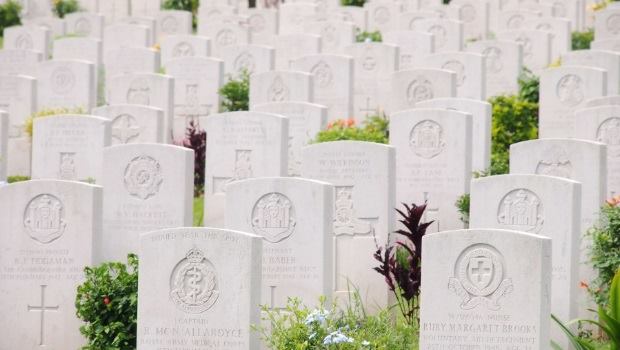“Rescaling” war memories at Kranji Cemetery and Memorial
November 14, 2017

How relevant is the Kranji War Cemetery and Memorial in post-colonial Singapore?
Remembrance Sunday is commemorated annually on the Sunday closest to November 11. It is a day to honor Commonwealth soldiers who sacrificed their lives in the line of duty. On Remembrance Sunday, members of the diplomatic corps, military, Singapore Armed Forces Veterans League, and public come together for a service at Kranji War Cemetery and Memorial to primarily honor Commonwealth soldiers interred there who lost their lives during WWII defending Singapore (as part of Malaya which then also included Malaysia).
However, the Kranji War Cemetery and Memorial (and Remembrance Sunday) are also legacies of Singapore’s colonial past. Considering that colonialism ended more than five decades ago, Singaporeans may feel detached from both the site and service. Further adding to the detachment is that the majority of the remains belong to foreign soldiers whereas there is a separate Civilian War Memorial dedicated to the memory of the local war dead. This other memorial has its own service held annually on 15 February to mark the day Singapore fell into Japanese hands.
Still, A/P Hamzah Muzaini (Department of Southeast Asian Studies) and Prof Brenda Yeoh (Department of Geography), in ‘“Rescaling” war memories at Kranji Cemetery and Memorial’, a chapter in Contested Memoryscapes: The Politics of Second World War Commemoration in Singapore (2016), make the case that the Kranji War Cemetery and Memorial has undergone ‘localization’ so that it does not remain solely a space for foreign nationals to commemorate events which lack resonance with locals. This has included, among others, signage in national languages (reflecting multicultural Singapore) and more ‘native’ foliage. Additionally, the historical narratives in guided tours have been retold via local lenses, such as when more local war exploits are highlighted, and where the focus is less on the nationality of the soldiers buried there but more on the universality of the values which the soldiers stood for, thus making the memoryscape more resonant to Singaporeans.
In highlighting such ‘localization’ efforts, Muzaini and Yeoh reveal how colonial landscapes are still useful as a means of bringing the citizenry together even in post-colonial Singapore.
To get the book, follow this link.
